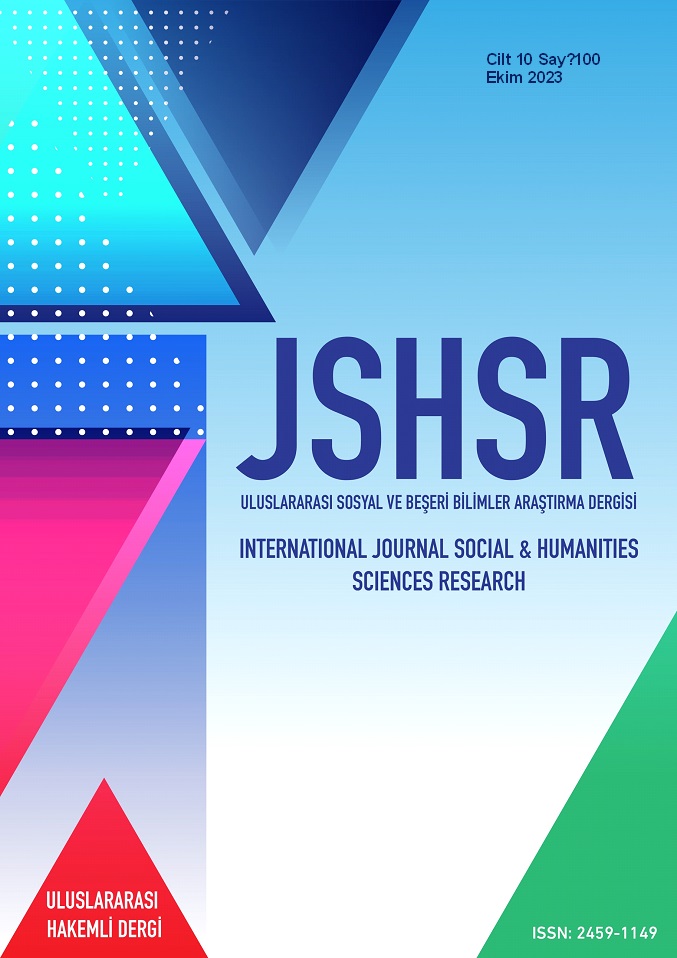Applications in the Field of Education and Health: BYUEE Education
DOI:
https://doi.org/10.5281/zenodo.10042377Keywords:
Bimanual Intensive Upper Extremity Training, Child, Education, Health, Cerebral Palsy, TreatmentAbstract
Individuals in society need various needs and rights in order to continue their vital activities and daily lives. Among these rights, education accompanies the process of individuals from early ages to later periods. Education is the general name given to the changes in knowledge, skills and understanding that individuals acquire in order to survive and take a place in society. Education, in a broad sense, is all social processes that are effective in people's acquisition of social standards, beliefs and ways to make life easier. Food and drink, education, employment and security are among these rights and requirements. Among these needs, it is an indisputable fact that health is necessary for the continuation of vital activities. Individuals may experience various health problems from birth to later ages. One of the health problems that can be seen in individuals is cerebral palsy (CP). CP is a phenomenon that may occur during birth, when the baby is separated from the mother's womb, and occurs when the amount of oxygen reaching the newborn's brain decreases due to some problems. Treatment of children with CP requires a multidisciplinary approach. In this respect, many branches, from pediatricians to neurologists, from physiotherapists to orthopedists, are involved in the treatment process.
Just as health problems are different, treatment options also vary. Education of students in the field of health is very important before the diagnosis and treatment of health problems. So much so that one of the methods applied to patients regarding the treatment of health problems is Bimanual Intensive Upper Extremity Training (BYÜEE - Hand Arm Bimanual Intensive Therapy). Although it is among the activity-based approaches, it is preferred in individuals diagnosed with CP. BYÜEE aims to improve uniteral involvement in children with CP through intensive activity programs that include both hands.
In this study, it was aimed to examine the studies published on national and international platforms in which BYÜEE was preferred and to determine the findings regarding the results. Literature scanning method and content analysis were preferred in the research, and studies published on national and international platforms in which BYÜEE was preferred were examined. Considering the studies examined in the research, it was concluded that BYÜEE gave positive results in the treatment of children with CP.
References
Copnell, G. (2018). Informed consent in physiotherapy practice: it is not what is said but how it is said. Physiotherapy, 104 (1), 67-71.
Dündar, B. (2018). Hemiplejik serebral palsili çocuklarda omuz stabilizasyon egzersizlerinin el fonksiyonları üzerine etkisi [Yayınlanmamış Yükseklisans Tezi]. Hasan Kalyoncu Üniversitesi.
Durmaz, R.G., Akyürek, G. ve Bumin, G. (2018). Hemiparetik Serebral Palsili bir çocukta bimanuel eğitimin aktivite performansı üzerine etkisi- olgu raporu. Ergoterapi ve Rehabilitasyon Dergisi, 6 (1), 83-88.
Ercivelek, H. S. (2020). Dinî eğitim ve öğrenim hakki. İstanbul Medeniyet Üniversitesi Hukuk Fakültesi Dergisi, 5 (2020), 25-41.
Facchin P, Rosa-Rizzotto M, Visona Dalla Pozza L,Turconi AC, Pagliano E, Signorini S, Tornetta, L, Trabacca, A., Fedrizzi, E and Gipci (2011). Multisite trial comparing the efficacy of constraint-induced movement therapy with that of bimanual intensive training in children with hemiplegic cerebral palsy: postintervention results. Am J Phys Med Rehabil, 90 (7), 539–553.
Fulya, A.C. (2019). Serebral Palsi. https://www.fulyaayakcerrahisi.com/serebral-palsi/ (Erişim Tarihi: 22.09.2023).
Gordon AM, Schneider JA, Chinnan A, and Charles JR. (2007). Efficacy of a hand-arm bimanual intensive therapy (habit) in children with hemiplegic cerebral palsy: a randomized control trial. Dev Med Child Neurol, 49 (11), 830–838.
Gün, F. (2019). Hemiplejik serebral palsili çocuklarda “çocukların el becerileri değerlendirmesi (çebd)” ve “çocuk el beceri anketi’nin (ÇEBA)” türkçe'ye uyarlanması, geçerliliği ve güvenilirliği [Yayınlanmamış Yükseklisans Tezi]. Sağlık Bilimleri Enstitüsü, Hacettepe Üniversitesi, Ankara.
Kaya, S. (2017). Prenatal, natal ve postnatal dönemde fizyoterapi ve rehabilitasyon. Turkiye Klinikleri Physiotherapy and Rehabilitation - Special Topics, 3 (3), 154-164.
Keklikoğlu, H.D. (2020). Serebral Palsi (Beyin Felci) nedir? Serebral Palsi belirtileri ve tedavileri nelerdir?. Medical Park Sağlık Rehberi, https://www.medicalpark.com.tr/serebral-palsi-beyin-felci-nedir-belirtileri-ve-tedavileri-nelerdir/hg-1959
NLPH (2020). Serebral Palsi. NP İstanbul Beyin Hastanesi, https://npistanbul.com/serebral-palsi
Numanoğlu, A. A. (2016). Spastik Serebral Palsi’li Çocuklarda Fonksiyonel Gövde Eğitiminin Üst ve Alt Ekstremite Motor Fonksiyonları Üzerine Etkisinin Araştırılması [Yayınlanmamış Doktora Tezi], Sağlık Bilimleri Enstitüsü, Hacettepe Üniversitesi, Ankara.
Öztürk, M., Şen, F.M., Mengeş, S., Bal, D., ve Arslan, R. (2023). Ortaokul 7. sınıf öğrencilerinde matematik kavramlarına yönelik metaforik algıların incelenmesi: asal sayı, rasyonel sayı ve tam sayı örneği. International Journal Of Socıal And Humanıtıes Scıences Research (Jshsr), 10 (93), 645-653, ttp://dx.doi.org/10.26450/jshsr.3589
Öztürk, M., Türker, Y., Bilici, F., Erol, M., ve Oğuz, T. (2023). Covid 19 önlemlerinde eğitimin konumu ve bir firma incelemesi. The Journal of Social Sciences, 62, 534-549, http://dx.doi.org/10.29228/ SOBIDER.68047.
Rankin, G., Rachael, S., Katherine, C., Karen, B., Kate, B., Sean, P. C., Billy, F., Fidelma, M., O’Neill, B., Ruth, ten Hove, Waterfield, J., Westwater-Woon, S. and Wellwood, I. (2020). Identifying priorities for physiotherapy research in the uk: the james lind alliance physiotherapy priority setting partnership, Physiotherapy, 107, pp. 161-168.
Romatem (2020). Serebral Palsi (CP). https://www.romatem.com/serebral-palsi-cp/
Tunç, B., Örmeci, A.R. ve Yorgancıgil, H. (1994). Serebral Palsi (İnfantil Serebral Parezi). SDÜ Tıp Fakültesi Dergisi, 1 (1), 37-42.
Uygur, R., Özen O.A., Baş, O., Çağlar, V. ve Songur, A. (2014). Hemiplejik serebral palsili çocukların baş ve boyun gelişiminin antropometrik ölçümler kullanılarak değerlendirilmesi, Kocatepe Tıp Dergisi, 15 (1), 27-31.
Yazıcı, M. (2017). Hemiparetik serebral palsili çocuklarda robotik yürüme eğiti minin etkilerinin incelenmesi [Yayınlanmamış Doktora Tezi]. Hacettepe Üniversitesi.
Downloads
Published
How to Cite
Issue
Section
License
Copyright (c) 2023 INTERNATIONAL JOURNAL OF SOCIAL HUMANITIES SCIENCES RESEARCH

This work is licensed under a Creative Commons Attribution 4.0 International License.


